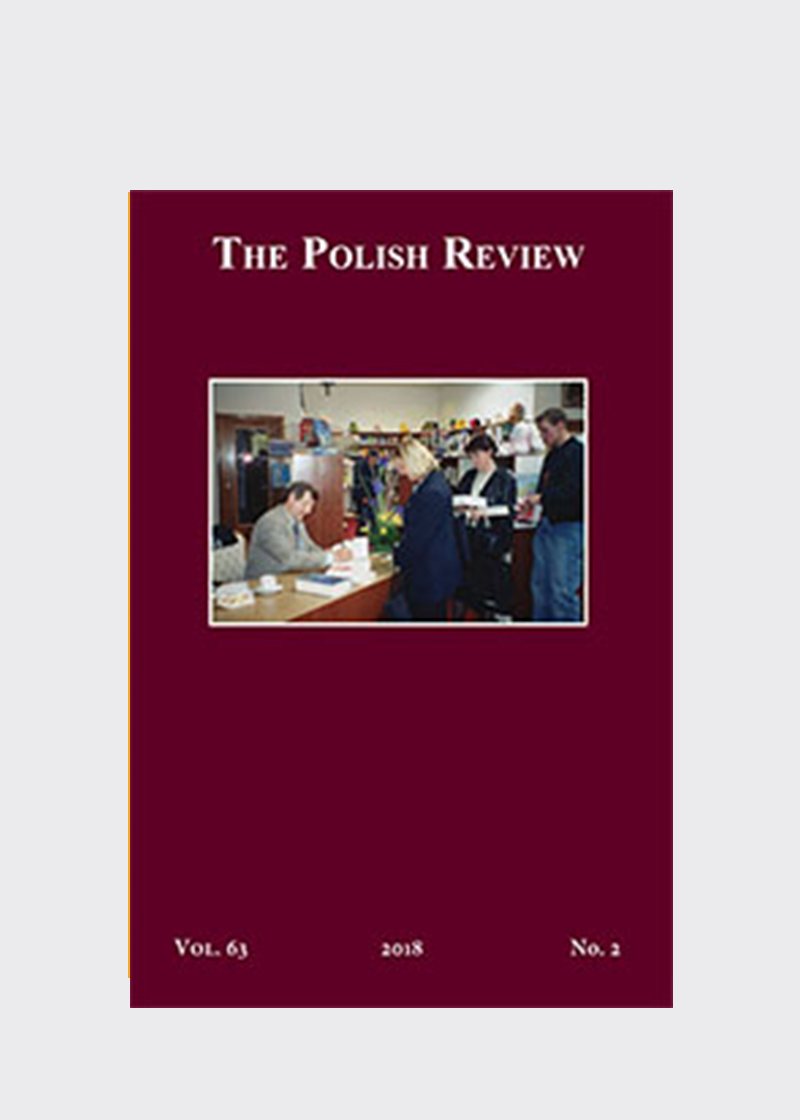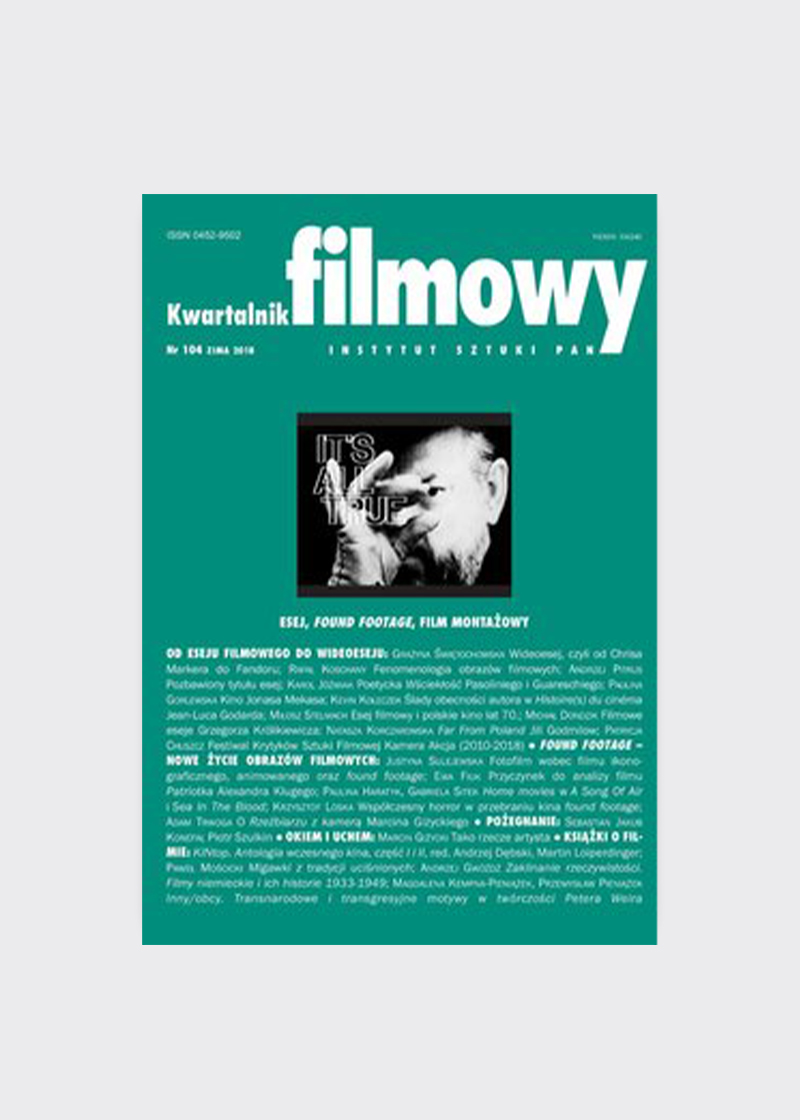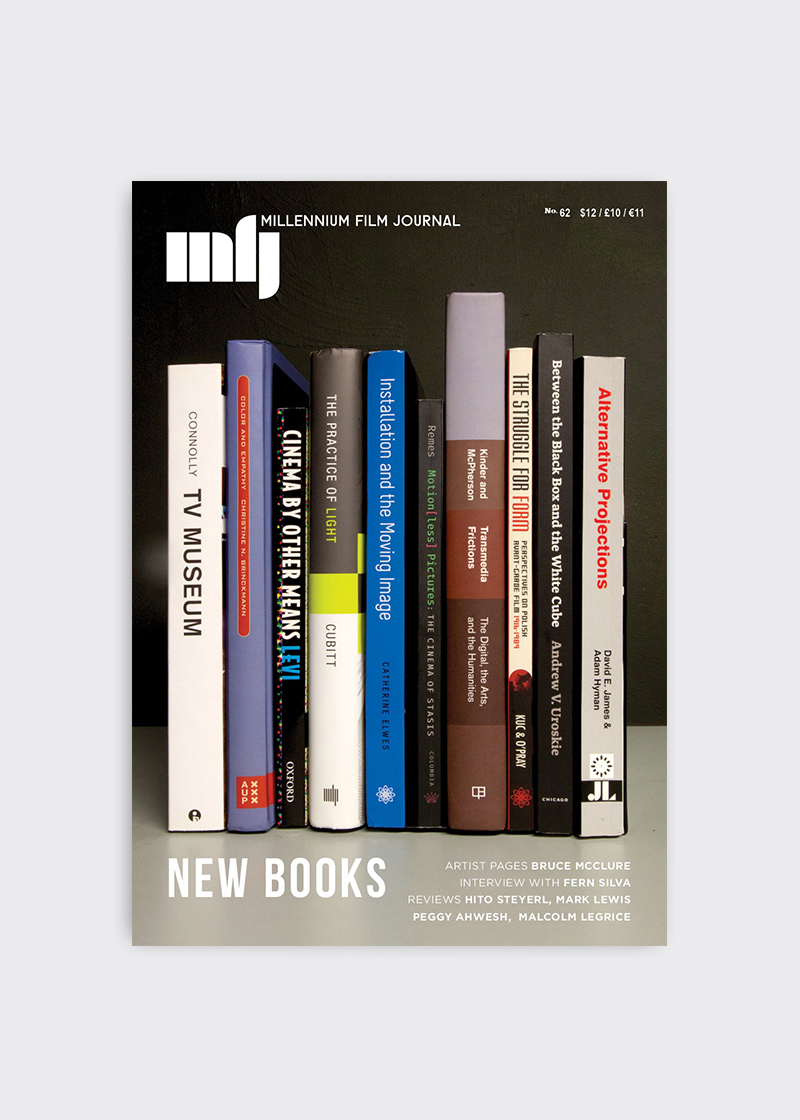Studies in Eastern European Cinema
Michael N. Goddard, ‘Islands, rites and tales of cinematic love: Navigating the Borowczyk Archipelago. Review of BORO, L'ÎLE D'AMOUR: The Films of Walerian Borowczyk’, Studies in Eastern European Cinema, vol.1, issue 9, 2018
Excerpt: ‘Even more original is Kuc’s experimental chapter that consists of a dialogue between Borowczyk, Guy de Maupassant, Nietzsche and Tolstoy, circulating around the short film Rosalie (1966), and like its object is composed as a restaging of the trial with these iconic voices as participants.’
Slavic Review
Dagmara Rode, ‘Review of Visions of Avant-Garde Film: Polish Cinematic Experiments from Expressionism to Constructivism’, Slavic Review, vol.77, issue 2, 2018
Excerpt: ‘Undoubtedly, Kuc has managed, through the analysis of a wide array of materi- als, to show the complex character of cinematic experiments in Poland, casting light on many previously underrated phenomena. Her account is situated in the broad context of the Polish and international avant-garde scene (the book’s rich bibliography is worthy of note), so the reader could understand how the experiments were rooted in different traditions and complicated historical and cultural circumstances (…) Kuc’s ambitious project provides a comprehensive view of Polish avant-garde film before 1945, making a solid contribution to the experimental cinema field of studies and showing how illuminating an account based on sources other than realized films can be for early avant-garde cinema.’
Tadas Bugnevicius, ‘Review of Visions of Avant-Garde Film: Polish Cinematic Experiments from Expressionism to Constructivism’, Canadian Journal of Film Studies / Revue canadienne d'études cinématographiques, University of Toronto Press, vol. 27, no.1, Spring 2018
Excerpt: ‘Kuc convincingly shows that before the 1930s there existed a fervent avant-garde film discourse among Polish artists, critics, and intellectuals. It was maintained and supported by film magazines and film societies, by the emergence of theoretical debates as well as rudimentary film theory, and by the various avant-garde groups—formists, futurists, constructivists—that were envisioning films without being able to realize them. Although Kuc’s decision to begin with the year 1896 may make her account of the avant-garde film seem teleological, it does not take anything from the book’s principal ideas. It only makes her work richer, with every chapter being a revelation in this still understudied area of Eastern European cinema. One thing is certain: we need a full English translation of Irzykowski’s Tenth Muse.’
Viewfinder
Donatella Valente, ‘Review of Visions of Avant-Garde Film: Polish Cinematic Experiments from Expressionism to Constructivism’, Viewfinder. The British Universities and Colleges Film and Video Council, no.108, September 2017
Excerpt: ‘If Franciszka and Stefan Themerson are generally regarded as the progenitors of Polish avant-garde film, starting with Apteka (Pharmacy, 1930), any surviving cinematic experiments made between 1918 and 1939 have a fragmentary nature, or consist of a series of unfinished projects. For this reason, Kamila Kuc’s book constitutes a visionary and pioneering contribution to the history of Polish art between 1896 and 1945. It is a compelling read as the author has perceptively mapped a constellation of contributions and collaborations, both theoretical and practical, memoirs and anecdotes by critics and filmmakers. She has re-drawn the historical boundaries of the European historic avant-garde to include the Polish art landscape.’
Alexander Lindskog, ‘Review of Visions of Avant-Garde Film: Polish Cinematic Experiments from Expressionism to Constructivism’, The Polish Review, vol. 63, No. 2, 2018.
Film Quarterly Poland
Andrzej Pitrus, ‘The nonexistent history of Polish film avant-garde. Review of Visions of Avant-Garde Film: Polish Cinematic Experiments from Expressionism to Constructivism’, Film Quarterly, 2018 (Polish edition)
Abstract: ‘The author of this volume proposes an original perspective, paying attention to phenomena that have not been yet described or that have been so far ignored. Her reflection focuses on the relationship between the film and other areas of the avant-garde. According to Andrzej Pitrus, the book is not only a valuable by filling the gap in the literature devoted to early Polish experimental cinema, but also an original proposal of an “alternative” cinema history.’
Slavic Review
Janina Fialkowska, ‘Review of BORO, L'ÎLE D'AMOUR: The Films of Walerian Borowczyk’, Slavic Review, vol.76, issue 1, Spring 2017
Excerpt: ‘Boro, l’ile d’amour: The Films of Walerian Borowczyk, is a thought-provoking collection of different essays commenting on the life and films of a renowned Polish film director, Walerian Borowczyk (…) One of the strengths of this book is that the authors of the essays link Borowczyk’s artistic output with the social and artistic environment of Poland in which he grew up, and of France, where he spent most of his adult life. Actually, the first and the second chapters written by the editors of the book include an astounding list of names of famous writers, visual artists, and filmmakers from France and Poland who have written reviews about Borowczyk’s films or with whom Borowczyk collaborated.’
Cineaste
Ela Bittencourt, ‘Review of BORO, L'ÎLE D'AMOUR: The Films of Walerian Borowczyk’, Cineaste, Winter 2015
Excerpt: ‘Hence BORO, L'ÎLE D'AMOUR, a new compendium of essays on Borowczyk, addresses directly the doubts about his artistic trajectory, while it reshapes the critical discourse around him. Instead of an artist spiraling down, in pursuit of spurious pleasures, we are offerred a scintillating portrait of a master, whose sensibility may nevertheless clash with contemporary tastes.’
Millenium Film Journal
Andrzej Jachimczyk, ‘Review of The Struggle for Form: Perspectives on Polish Avant-Garde Film 1916-1989’, The Millennium Film Journal, 62, October 2015
Excerpt: ‘The Struggle for Form is not just an introductory reconnaissance of Polish experimental filmmaking intended for an academic readership, but a springboard and inspiration for present and future experimental filmmakers. It is a valuable book for all those who are seeking for new forms of artistic expression, whether practitioners or potential viewers.’
Slavic Review
Michael Goddard, ‘Review of The Struggle for Form: Perspectives on Polish Avant-Garde Film 1916-1989’, Slavic Review, vol.74, no.3, Fall 2015
Studies in Eastern European Cinema
Andrzej Pitrus, ‘Incomplete forms. Review of The Struggle for Form: Perspectives on Polish Avant-Garde Film 1916-1989’, Studies in Eastern European Cinema, vol.6, issue 2, 2015
Excerpt: ‘The Struggle for Form is a valuable publication and could be recommended to any person seriously interested in avant-garde cinema. It presents Polish films as highly unique and original contributions to world experimental art, but, on the other hand, it only whets one’s appetite.’
Slavic and East European Journal
Maria Shpolberg, ‘Review of The Struggle for Form: Perspectives on Polish Avant-Garde Film 1916-1989’, Slavic and East European Journal, vol.60, no.3, 2014
Excerpt: ‘I have saved Kamila Kuc’s and Jonathan Owen’s pieces for last because they are methodolog- ically the most interesting. Kuc’s essay on “The Impact of Polish Futurism on the First Polish Avant-Garde Films” invites readers to consider the relationship between avant-garde cinema and poetry, arguing that “the theoretical discourses were as important in the process of formu- lating the avant-garde film culture in Poland as the films themselves” (32). Drawing on thinkers as diverse as Tom Gunning, Pavle Levi, and Jonathan Walley, Kuc emphasizes the importance of the “cinematic imagination” in her appraisal of both the content of Futurist poems, and the graphic elements accompanying their printed form (illustrations explicitly made to resemble film reels, photo-collages, and typographic experiments). A number of exemplary illustrations follow the article.’











